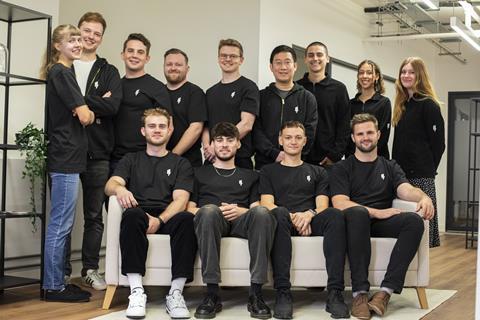UK spin-out Gaussion aims to charge electric vehicles in minutes
Charging times for lithium-ion batteries have been a hurdle on the path to wider adoption of electric vehicles (EVs). Despite various efforts since lithium-ion batteries were developed in the 1980s most fast-charging solutions are either too expensive or damage the cells.

University College London (UCL) spinout Gaussion claims its magnetic enhancement can unlock rapid charging on existing commercially available battery cells, without reducing their shelf life. According to the pending patent for the technology, it can reduce charging times by up to 67% - an improvement that Gaussion hopes will benefit everything from smartwatches to mobile phones, and ultimately aid the transition to electric vehicles.
Founders Thomas Heenan and Chun Tan came up with the idea around a decade ago, while conducting their PhD studies at UCL’s Electrochemical Innovation Lab, with supervisors Paul Shearing and Dan Brett.
‘We were PhD students doing experiments on particle accelerators, with magnets in the order of six to 12 feet tall,’ Heenan recalls. ‘The purpose of the magnets is to make pencil-thin ion beams that you can fire at materials and conduct fascinating experiments. We were thinking, if we can use large magnets to finely control where the ions travel, why can’t we control the movement of a lot of ions with smaller magnets?’
Heenan and Tan found that, by applying the right magnetic fields, they could optimise the journey of lithium ions from the cathode to the anode of a battery. The magnets reduce resistance every step of the way: it is easier for the ions to leave the cathode particles, they can travel more smoothly around other particles in the electrolyte, flow through the separator material, and enter the anode. ‘The contribution of reducing resistance at each one of those steps is a very large net resistance reduction,’ Heenan says.
Because the ions reach the anode faster, charging time is reduced. In addition, the magnetic fields lower the cell degradation mechanisms that are due to resistance, making batteries last longer. Heenan and Tan have tested the technology on commercial cells designed to charge in one to five hours. They were able to charge them in ten minutes and repeat the process 1000 times while still meeting all warranty specifications.
Breaking out of the lab
After their PhDs, Heenan and Tan entered the Faraday Institution Entrepreneurial Fellowship programme to explore their idea, and the commercial opportunities it might have. They filed for patents in 2019. In 2021, they won the Royal Society of Chemistry Emerging Technologies competition, which gained them a prize fund and support of a business mentor.
‘The RSC support kickstarted our business development,’ Heenan recalls. ‘Up to that point, we’d largely focused on the technology.’
The pair won the Autocar Drivers of Change award soon afterwards, which generated more interest from formal investors. Last summer, Gaussion closed a venture capital investment round of £2.85 million, formally spinning the company out of the university.
The investment allowed Heenan and Tan to move into offices in London, and step up from benchtop testing to an independent facility with state-of-the-art equipment. They brought on board prototype engineers and electromagnetism engineers and are continuing to grow the team. On the morning he spoke to Chemistry World, Heenan had just finished sending out advertisements for another three positions.
At this point, Gaussion has moved from ‘iPhone-sized’ cells to larger portable electronics, and is now testing cells for use in electric vehicles. ‘The target is a module which is about one quarter of the size of a battery pack that would go in a car, with the intention of using that as a demonstrator before we move on to full vehicle testing in the next three to five years,’ Heenan says.
Laser-focused
Heenan’s goal is to create a technology that allows consumers to charge a vehicle for 200 miles of range in ten minutes or less. ‘The average user uses less than 200 miles per week, so the idea is to get your week’s worth of charging done in less than ten minutes,’ he says.
In theory, the applications of Gaussion’s technology are much wider than that. Heenan says the technology is agnostic to battery chemistry, meaning it can improve the efficiency of any cell in the magnetic field they’re producing. ‘We are laser-focused on electric vehicles, with the caveat that we are exploring resistance-based problems in other electrochemical devices,’ he says, with plans that include ‘everything up to an including the size of an EV’.
To bring the technology to market, Gaussian envisages a mixture of producing and selling its own products, and licensing its technology for use in other applications.
Ultimately, Heenan and Tan’s goal is to use their technology to solve ‘genuine problems’. ‘Rather than making something slightly better, we want to completely revolutionise how that product is used by the consumer,’ he says. ‘At the moment we see EV charging as the bottleneck for adoption. So, if we can reduce that bottleneck and increase adoption, that’s mission accomplished.’
Gaussion
Date of founding: 2021
Location: London, UK
Number of employees: 7 full time
Origin: University College London spin-out
Total investment to date: £2.85 million












No comments yet